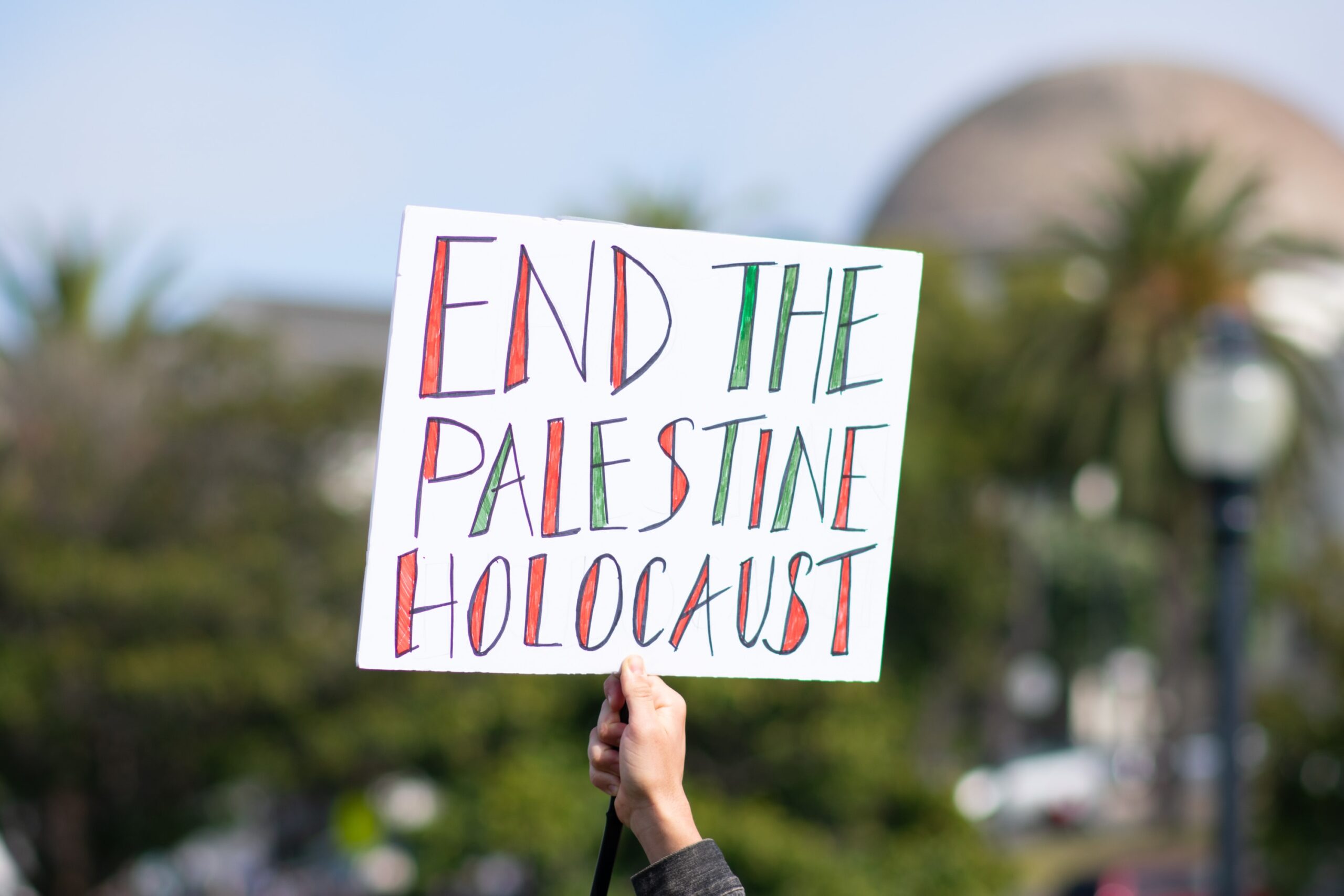| Getting your Trinity Audio player ready... |
Blaming Israel only encourages Hamas to repeat its “dead baby strategy” and other terrorist groups to emulate it. This strategy, which has worked effectively, operates as follows: Hamas attacks Israel either by rockets or through tunnels, thereby forcing Israel to respond, as any democracy would do, to protect its citizens. Because Hamas fires its rockets and digs its tunnels from densely populated civilian areas, rather than from the many open areas of the Gaza Strip, the inevitable result is that a significant number of Palestinian civilians are killed. Hamas encourages this result, because it knows the media will focus more on the photographs of dead babies than on the cause of their death: namely, the decision by Hamas to use these babies and other civilians as human shields.
In June of 2008, presidential candidate Barak Obama visited Sderot, and after viewing the rocket residues and meeting with residents, this is what he said: I don’t think any country would find it acceptable to have missiles raining down on the heads of their citizens. The first job of any nation state is to protect its citizens. And so I can assure you that if—I don’t even care if I was a politician. If somebody was sending rockets into my house where my two daughters sleep at night, I’m going to do everything in my power to stop that. And I would expect Israelis to do the same.
Every time Israel seeks to defend its civilians against terrorist attacks, it is accused of war crimes by various United Nations agencies, hard left academics, and some in the media. It is a totally phony charge concocted as part of Hamas’s strategy—supported by many on the hard left—to delegitimate and demonize the Jewish state. Israel is the only democracy in the world ever accused of war crimes when it fights a defensive war to protect its civilians. This is remarkable, especially in light of the fact that Israel has killed far fewer civilians than any other country in the world that has faced comparable threats.
Related Study:
Please note that the studies shared on this website are for informational purposes only. Readers are encouraged to critically evaluate the content and not to accept it as absolute or complete without further verification. The views expressed in the studies do not necessarily reflect the opinions of this website.
International Law and the Conflict in Gaza by Robbie Sabel
Winston Churchill’s six-volume history of World War II contains, as far as I can recall, no reference to problems of international law. Churchill’s lengthy wartime correspondence with President Franklin D. Roosevelt did not involve the interpretation of the laws of military conflict. Apparently, when countries are engaged in critical battles, consulting law professors or jurists is not always a top priority.
It can legitimately be asked, therefore, whether Israel’s military campaign in Gaza should be subject to such a legal examination. The question is even more relevant given that one party to the conflict, Hamas, blatantly ignores every norm of international law, deliberately killing civilians, taking hostages, putting military installations in hospitals, and using Palestinian civilians as human shields. The behavior of that party includes the slaughter in cold blood of over 1,200 Israelis and foreign citizens and the wounding of over 5,500; widespread acts of torture and maiming, burning alive, beheading, rape and sexual assault, and mutilation of corpses; the abduction of at least 247 hostages including infants, the elderly, entire families, persons with disabilities, and Holocaust survivors; and the indiscriminate firing of thousands of rockets into Israel. Hamas’s military infrastructure, command, personnel, communications, and weapons are deliberately located within residential, commercial, and other civilian buildings, including specially protected sites—for the most part in the densest sections of Gaza. Hamas purposefully conceals some of its most valuable and extensive military bases and assets in and underneath hospitals, including the largest one in Gaza, Al-Shifa. Hamas prepared and initiated the October 7 attacks from within civilian neighborhoods adjacent to Israeli territory and used them as a base from which to continue raids into Israel in the following days.
Nevertheless, the answer to the question posed above is that international law is indeed relevant to the conflict. It is relevant for Hamas, since the organization and its members have carried out grave war crimes, which makes them hostis humani generis [enemies of mankind]—criminals who, under international law, can be tried by any state and by the International Criminal Court at the Hague. In reality, the only Hamas members likely to ever stand trial are those who have been captured by Israel or are unwise enough to travel to a democratic, law-abiding country.
The laws of war reflect basic humanitarian principles; reciprocity plays little part in those laws. If one party commits atrocities, this does not allow the other side to do the same. Israel is bound by the laws of despite the fact that Hamas has flouted them. Israel is a democratic, law-based society; customary international law is part of the law of the land and is thus enforced by Israeli courts. International law is, moreover, highly relevant in Israel’s foreign relations. Legitimacy grants political power. As a small state, Israel is dependent on foreign trade and on good relations with other states; therefore, if an action is branded as illegitimate or illegal under international law, Jerusalem has a problem. Israel’s Arab adversaries are perfectly aware of this, and that is why they are making an effort to characterize Israeli military activities as illegal. If they achieve that, they will have gained a tremendous political victory.
As Israel does not exercise effective control over the Gaza Strip, the legal framework governing the present hostilities is not the law of belligerent occupation, but rather the rules of the laws of war. There are six major issues in the international law of war that are relevant to Israel’s present military campaign, which are liable to be used as a part of “lawfare” against the Jewish State. They are the rules relating to distinction, proportionality, the use of human shields, the use of disproportionate force, the destruction of civilian buildings, and humanitarian aid to the enemy.
Distinction
The rule of distinction is that only enemy combatants are legitimate targets. Civilians are not, unless they are directly participating in hostilities. This common-sense rule was not controversial in classical war situations, but becomes problematic when a group such as Hamas wears civilian clothing and operates from civilian neighborhoods. It then becomes very difficult to distinguish between combatants and civilians. Nevertheless, the Israel Defense Forces (IDF) go to great lengths to avoid harming civilians out of sincere humanitarian concerns, because harming civilians gives Israel no military advantage. It fact, when collateral damage is caused, it actually serves the public relations of Hamas.
When conducting attacks, parties to a conflict must take precautions that are feasible under the operational circumstances to minimize civilian death or injury as well as damage to civilian structures. Accordingly, the IDF takes various measures, including the issuance of advance warnings. In attempting to miniminze harm to noncombatants, the IDF has repeatedly called on them to temporarily evacuate areas of combat. Hamas has sought forcibly to prevent them from leaving areas of hostilities in order to cynically exploit the inevitable casualties that will result. The IDF also drops leaflets over areas that are expected to come under attack with instructions to evacuate and how to do so; broadcasts messages over the radio and through social media warning civilians to distance themselves from Hamas operations; and in some instances, even makes phone calls to occupants of targets warning them of impending attacks.
When circumstances do not permit the provision of effective advance warning before an attack—such as when the strike is aimed at a militant who may exploit the warning to escape, or when there is not enough time—there is no legal requirement to do so. In the current war, the fighting is made even more difficult due to the fact that Hamas uses the IDF’s advance warnings in order to prepare ambushes and defenses.
Proportionality
The rule regarding proportionality is that it is prohibited to carry out an attack against a military target when the expected incidental loss of civilian life, injury to civilians, or damage to civilian objects would be excessive in relation to the concrete and direct military advantage that is anticipated from the attack. A tragic result of the fact that Hamas operates from civilian facilities is that when the IDF attacks Hamas military targets, nearby civilians are liable to be hurt. The fact that noncombatants have been killed does not indicate a violation of law unless they were deliberately or recklessly targeted—something that Hamas does and the IDF does not. If the IDF is attacking Hamas rockets that are placed in close proximity to civilians, the commander has to weigh on the spot if the foreseeable harm would be excessive in relation to the military advantage of attacking the target. Is it proportional? There can be cases in which foreseeable civilian casualties would be considered excessive. For instance, in the recent fighting in Gaza, Hamas put a military command post under a hospital. Under the laws of war, Israel could have attacked it but did not do so, as the IDF came to the conclusion that such a move would be liable to cause excessive damage to noncombatants even in relation to the military advantage of taking out the command post.
This dilemma becomes most acute when we discover a rocket that is about to be launched. In weighing its response in such cases, Israel has to take into account not only the civilian casualties that might be sustained on the enemy’s side, but also our own. The proportionality assessment—with respect to both civilian harm and military advantage—is based on the facts as they are understood in real time, and on the military commanders’ judgment in the field, not on hindsight.
Human Shields
The use of human shields is a war crime, and Hamas does so as a matter of policy. The rule of the laws of war on this issue, although not explicit, is that individuals who are used as human shields not of their own volition do not in and of themselves become legitimate targets. When Hamas uses a school as a base for its rockets, as it has done in the past, the children are not legitimate targets, and the rule of proportionality still applies. Whether the harm to the children would be excessive in relation to the military advantage must be considered. Hamas exploits this rule, knowing Israel’s reluctance to attack civilian buildings such as schools. If, however, civilians voluntarily serve as human shields, then their actions can be taken into account against them when weighing the rule of proportionality.
Disproportional Force
Israel has been accused of using disproportionate force in combat. Anyone with experience in armed conflict knows that you want to hit the enemy’s forces harder than they hit you. They should understand that striking you is dangerous. There was once a cartoon regarding Israel in a French magazine that showed an animal in a cage. Underneath it was the caption: “Be careful! This animal is dangerous: When attacked, it defends itself.” Our enemies should know that if they attack us, we will strive to hit back harder than they did. Every army in the world knows that if you are attacked with a rifle, there is no rule that stipulates that you can only shoot back with a rifle, but using a machine gun would not be fair, or that if you are attacked with only one tank you cannot shoot back with two. Nevertheless, Israel has a serious public relations problem and is being pilloried for the purported use of disproportionate force.
Destruction of Civilian Buildings
It is illegal to deliberately destroy civilian buildings unless there is a military necessity to do so. These structures lose their protection, however, when they are used to make an effective contribution to military action. The large-scale damage to civilian structures in Gaza was justified by Israel as a military necessity, as the buildings were being used by Hamas fighters, and attacks from these buildings posed a threat to Israeli soldiers.
Humanitarian Aid to the Enemy
The rule of law is that a state may not use the starvation of enemy civilians as a means of warfare. However, there is no rule that obliges a party to the conflict to provide supplies to the enemy. If possible, that party should allow the enemy civilian population to receive humanitarian relief from a third party or humanitarian organization. This is what Israel did recently in allowing relief convoys to enter the Gaza Strip from Egypt even during periods of intense fighting. Israel went beyond its legal obligations and provided water from Israeli sources.
No army can have a perfect record of behavior during intense fighting. Still, the IDF’s compliance with the laws of war has received nearly unanimous praise from Western military law experts (though not necessarily also from the foreign ministries of those countries). The IDF receives real-time guidance and advice from legal experts on the laws of war. This is done to ensure humanitarian behavior, but also, frankly, for the sake of Israel’s self-interest.
It is distressing for us in Israel that after cursory condemnation of the Hamas attack, many international bodies now ignore the terror organization’s current actions and call on Israel to cease its military campaign. There was no such call on Western states to cease actions against the Taliban after 9/11 or against ISIS, and there should be none in Israel’s case.













